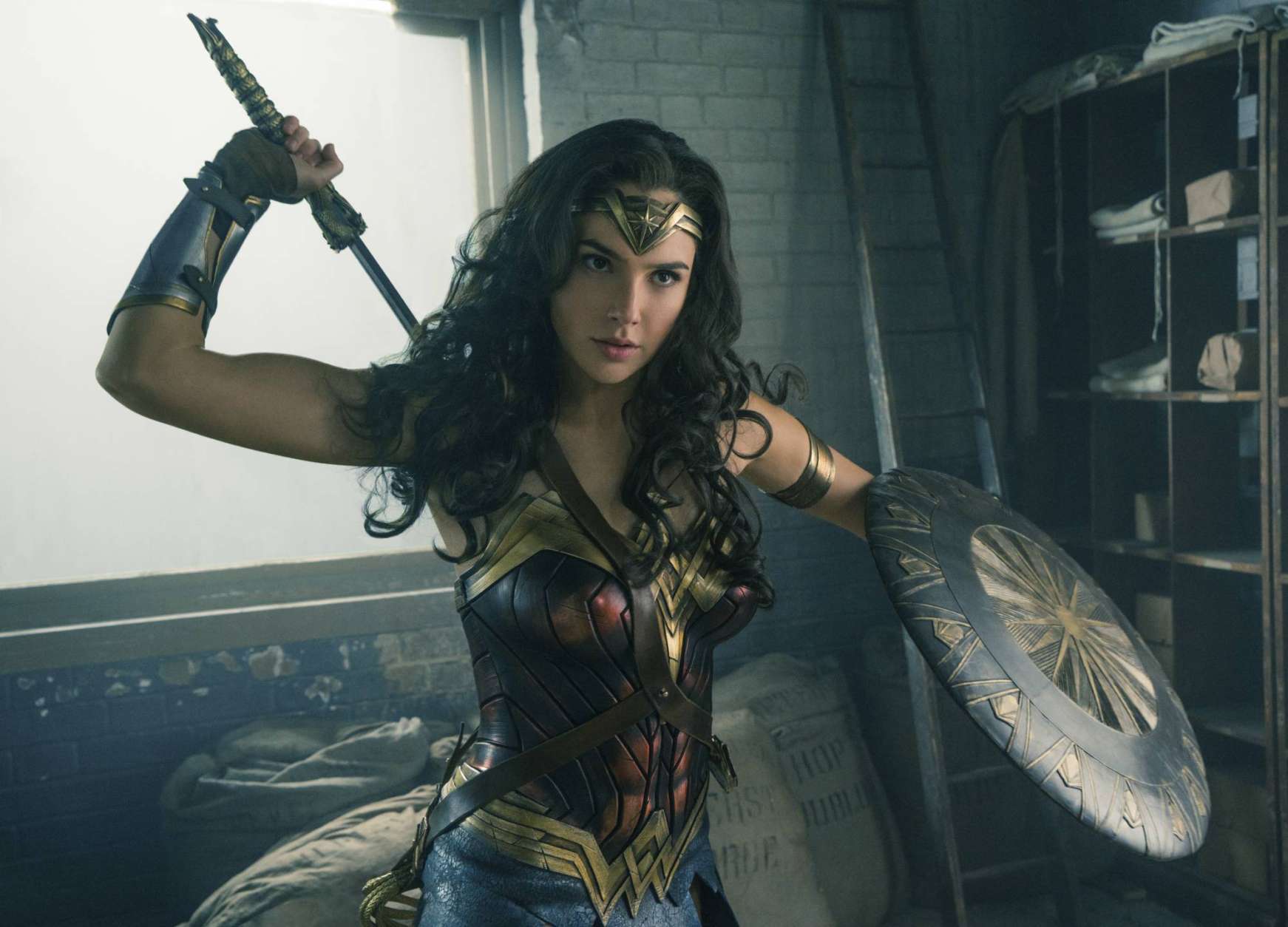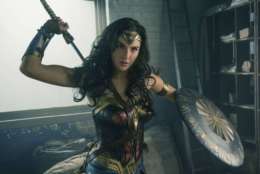

WASHINGTON — The DC Extended Universe suffered a pair of blows in 2016 with “Batman v. Superman” and “Suicide Squad,” which both made money due to pre-existing brands, but were widely panned by critics compared to rival Marvel.
The one ray of hope was Gal Gadot, who stole the show from Ben Affleck’s Batman and Henry Cavill’s Superman in a peripheral role as Wonder Woman. Her magnetic potential made “Wonder Woman” the most anticipated superhero flick of 2017, a sink or swim proposition for a struggling studio now facing a daunting task of blockbuster proportions: with great power comes great responsibility.
Ladies and gents, I’m thrilled to report that DC nailed it. Perhaps it’s because “Wonder Woman” is a refreshing origin story that takes its time to actually develop a character arc. Perhaps it’s because it focuses on a single hero instead of the overcrowded recent superhero mashups. Or, perhaps it’s because the action is earthbound and war-torn (i.e. “Captain America: The First Avenger”) than aliens attacking (i.e. “Thor: The Dark World”). However you slice it, it’s the best superhero movie in years.
The film opens with childhood Diana (Lilly Aspell) growing up on the island of Themyscira, home of the Amazons, a race of female warriors put on earth by Zeus. Diana is told that she was sculpted from clay by her mother, Queen Hippolyta (Connie Nielsen), who refuses to let her train for battle, leaving preteen Diana (Emily Carey) to seek out secret training by the head warrior Antiope (Robin Wright).
By the time she is grown, adult Diana (Gal Gadot) can kick butt with the best of them, but she still doesn’t grasp the extent of her supernatural powers. Her journey begins when World War I pilot Steve Trevor (Chris Pine) crashes into the ocean, having arrived through a portal from the human world. He tells of a global conflict, causing Diana to leave home to fight The War to End All Wars, seeking a showdown with Ares, the God of War, whom she believes is fueling the German Army.
It’s crazy to think that it took 76 years for “Wonder Woman” to receive her own live-action feature. Created by William Moulton Marston, she debuted in “All Star Comics #8” in October 1941. She was further popularized by TV’s “Wonder Woman” (1975-1979), starring Lynda Carter, who now lives in Potomac, Maryland, and is often the first celeb to walk the red carpet at the Kennedy Center Honors.
Entire dissertations could be written on why a patriarchal society has enabled countless reboots of Superman, Batman, Spider-Man and Iron Man before we’ve seen even one Wonder Woman flick. So you can understand the growing frustrations by decades of women moviegoers (and woke dudes) that finally and gloriously culminate in “Wonder Woman.”
To paraphrase Samuel Beckett, Gal Gadot is the woman (Gal) we’ve been “Waiting for” (Gadot). Not only does she have on-screen action chops as Gisele in the “Fast and Furious” franchise, she has real-life experience as both an Israeli army veteran and a former Miss Israel, an authentic assassin beneath a bombshell veneer. It’s beyond awesome watching a Jewish soldier take on the pre-Nazi German Army.
It’s the kind of casting that would have shattered Leni Riefenstahl’s propaganda cameras and cracked Alfred Hitchcock’s “Male Gaze” with female empowerment.
Like Taraji P. Henson in “Hidden Figures” (2016), Diana refuses to stand outside a door as a group of men meet inside. When Steve flirts with her, she says, “Men are essential for procreation, but when it comes to pleasure, unnecessary.” And when Steve’s secretary Etta Candy (Lucy Davis) explains her duties — “I go where he tells me to go; I do what he tells me to do” — Diana staunchly replies, “Where we come from, that’s called slavery.” You’ll turn to the person next to you and echo Etta: “I like her!”
But “Wonder Woman” is much more than just a rousing feminist movie; it’s a rousing movie, period. “Sex and the City” writer Allan Heinberg’s superb script is fertile ground for the dynamite direction of filmmaker Patty Jenkins, who coached Charlize Theron to a Best Actress Oscar in “Monster” (2003) before earning an Emmy nomination for directing the pilot episode of AMC’s “The Killing” (2011).
Act One is a superb visual introduction to Themyscira, presented as a lush city on a majestic cliff (i.e. “Lord of the Rings”) by cinematographer Matthew Jensen (“Game of Thrones”). When the catalyst of Pine’s crash-landing arrives, Jenkins showcases her directorial prowess for staging battles, teaming with Oscar-winning editor Martin Walsh (“Chicago”) for a master class of an initial fight sequence.
The action is choreographed in a way that’s refreshingly easy to follow, using slow-motion at just the right moments without ever becoming shaky, blurry or bogged down by CGI. As we watch the arrow-slinging of horseback heroics, we feel like we’re watching moving panels of a comic book, recapturing a magic in “motion pictures” that Hollywood lost somewhere along the way of rapid-cutting combat.
The most effective example comes during a World War I trench sequence (i.e. “Paths of Glory”), as Diana climbs out of the Allied ditch to provide cover for the boys. Trudging across terrain dubbed “No Man’s Land,” she takes machine-gun fire on her shield and deflects rifle rounds with her wristbands as feminism and cinethestics collide to give us goose bumps in a truly seminal moment for the genre.
Between battles, the B-Story romance is charming. It starts with hilarious double entendres about a naked Pine, as Gadot points out of the frame to say, “Do you let that little thing tell you what to do?” Turns out, she’s pointing to his watch, a funny gag that simultaneously sets up a symbol for their love. It’s the first of many adorable exchanges between a goddess who doesn’t understand the human ways and a mortal who’s too much of a gentleman to make unwanted advances. The sexual tension builds from an intimate slow dance to a tasteful sex scene recalling Apollónia in “The Godfather” (1972).
These “lost in translation” flirtations not only work for “fish out of water” comedy in London (i.e. Thor hanging his hammer on Natalie Portman’s coat rack), they also form the spine of her character’s awakening. Viewers discover her powers right along with her, from her “Sword in the Stone” moment of fulfilling her destiny, to her ultimate realization as to the true meaning of the “God Killer” weapon.
Along the way, she believes her life’s calling is to save mankind from itself. After too many superhero movies dismissing humans as collateral damage, it’s refreshing to see Diana’s earnest creed: “I cannot stand by while innocent lives are lost!” Toward the end of Act Two, she even flees a showdown with the villains in an attempt to go save townspeople in danger. As Steve says, “We can’t save everyone in this war! It’s not what we are here to do,” Diana replies, “You’re right, but it’s what I am here to do.”
Her mission as mankind’s savior reveals an underlying theme of the nature of evil and what causes it. Are human atrocities predetermined or avoidable? This sparks a debate over fate vs. free will, as Gadot believes the war will automatically end once she kills Ares, while Pine insists that mankind is flawed. It all builds to an important “Why have you forsaken me?” moment for Diana, questioning everything she holds dear, before deciding humans are worth saving despite their capability of evil.
If there’s any flaw in the film, it’s that these beautiful soul-searching moments are subsequently strained by an overlong, overdone final battle. After two hours of subverting our expectations with refreshing choices, the climax is the first time that feels sadly familiar — packed with too much CGI, too many villains and unnecessary revelations that are merely meant to set up the next installment.
The film could have survived just fine with its two existing villains. German officer Ludendorff (Danny Huston, son of director John Huston) is a burly, menacing force, while his poison-gas chemist Dr. Maru (Elena Anaya, “Talk to Her”) is a killer henchman, donning a half-mask that recalls “Phantom of the Opera” (1925), “Eyes Without a Face” (1960) and Joker’s doomed girlfriend in “Batman” (1989). Once Ares is finally revealed, it reduces Dr. Maru’s presence, which had been chilling up until then.
Still, even these late shortcomings aren’t enough to take away from the other two hours of brilliance. If you’re at all a fan of the genre, you will freak when you see Gadot kick butt in Jenkins’ slow-mo as Hans Zimmer & Junkie XL’s electric guitar wails like Led Zeppelin’s “Immigrant Song.” It’s a holdover theme from “Batman v. Superman” amid a new score by Rupert Gregson-Williams (“Hacksaw Ridge”).
By any measure — socially, narratively, cinesthetically — “Wonder Woman” is a resounding success. Amid a franchise being trounced in the arena of public perception, Diana just saved the freakin’ day.
Move over, Marvel. Welcome to the party, DC.






